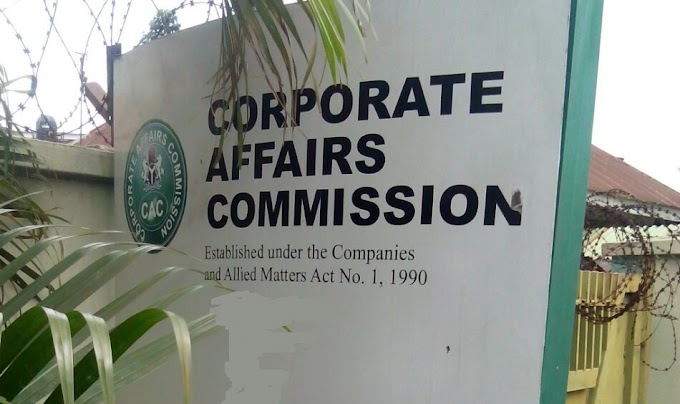PART IV: IN A RELATIONSHIP
This is the
war I mentioned earlier. This is your company starting a new life with another,
with a different culture. Done wrongly, that may be the end of everything your
company has worked for.
Entering a
relationship in the corporate world connotes acquisition or a full-blown merger; M&A. M&As are beneficial to your company in many aspects. However,
there are factors to consider before you take this bold step that will change
your company’s existence.
·
Customers and Market Share
According
to Michael E. S. Frankel in his book, Mergers
and Acquisitions Basics: The Key Steps of Acquisitions, Divestitures, and
Investments, perhaps the single most powerful and obvious reason to acquire
another company is for its customers. In essence, customers are the driver of
revenue, and revenue is the first goal of business.
Access Bank: the biggest bank in Nigeria
Following
its April 2019 acquisition of Diamond Bank, Access Bank became the biggest bank
in Nigeria by total assets and number of customers as well as a significant
retail footprint and infrastructure. According to Access Bank’s press release
for the bank’s audited results for the Full Year ended December 31, 2019, “Our
financial performance in 2019 was significantly influenced by the merger, as we
recorded a modest growth in profitability.”
The Bank
recorded gross earnings of N666.7bn (+26%y/y), and a 12% increase in Profit
Before Tax to N115.4bn despite the significant merger cost.
Customer
acquisitions can come in many flavours, Frankel writes. Buyers may simply seek
to acquire more customer relationships. Buyers may also seek to acquire
different kinds of customers. Different kinds of customers can mean new
geographic regions, new demographic segments, or even new legal entities (such
as business customers versus consumers).
Procter and Gamble (P&G) acquired Gillette
On January
28, 2005, P&G, one of the world’s largest consumer-packaged goods companies
headquartered in Cincinnati, Ohio, announced what was reported the largest
acquisition in its history. P&G agreed to buy Gillette in a $57 billion
deal.
Following
the acquisition, Gillette passed the following products and brands to P&G:
1. Toothbrushes
(Oral-B, Advantage);
2. Electric
toothbrushes (Braun Oral-B);
3. Razors
and Blades (Atra, Trac II, Good news, Sensor, Mach 3);
4. Shaving
foams and deodorants (Foamy, Satin care, Gillette series);
5. Electric
shavers (Silk epil, Braun syncho & flex)
6. Personal
care products (Right guard, Series soft & Dri, Dri idea); and
7. Batteries
(Duracell)
·
Economies of Scale
The idea is
“bigger is better”.
Economies
of scale is an age-long economic principle, and a simple formula big companies
apply in carrying on business, i.e. become big, cut production unit costs, mass
produce, and pass on the cost savings to customers by offering cheaper
products.
M&As
are fast and easy ways to increase volume (become big) and, thus, achieve
greater economies of scale.
Commenting
on the P&G acquisition of Gillette, Sean Egan, Managing Director of the
Egan-Jones Ratings Co. tells CBS Radio News that, “It’ll enable both Gillette
and Procter & Gamble to get better shelf space and to distribute their
products more cheaply.”
·
Geographic Reach
The use of M&A
to accelerate geographic expansion is a well-known business strategy. And when
you find the right partner, the benefits can be huge.
Frankel
writes that expanding into a new geographic region is challenging on a variety
of counts. In addition to the logistical challenges of setting up a local
operation and facilities and developing relationships with local suppliers and
customers, there is a broader challenge of understanding and operating within a
new local culture. For some companies and in some situations, acquiring a local
presence is easier and faster than building one.
In
overcoming these challenges, companies, over the years, have resulted in wooing
partners from different geographical locations in a bid to spread their
tentacles over those regions.
Access Bank acquired Transnational Bank and Cavmont
Bank
On July 20,
2020, Access Bank completed its acquisition of Kenya’s Transnational Bank PLC,
in line with its vision to expand its footprints across Africa. And by August 6
of the same year, Access Bank extended its tentacles into Zambia when it was
reported that its subsidiary, Access Bank Zambia, had reached an agreement with
Cavmont Capital Holdings Zambia PLC to acquire Cavmont Bank Limited.
Previously,
in December 31, 2019, Access Bank obtained the Central Bank of Guinea’s
approval, after prior approval by the Central Bank of Nigeria, to set up a subsidiary
in the country through 100 percent acquisition of a local bank at an estimated
cost of $14 million.
It should
however be noted that there are no automatic outcomes when it comes to
expanding across regions through M&A. Sometimes, an M&A deal will not
deliver as expected or can bring more complexity than anticipated.
·
Technology/Product
The need to
acquire technology or certain product may be the motivation for M&A.
eBay acquired ExpertMaker
On May 5,
2016, eBay announced its acquisition of ExpertMaker, a Swedish company with
specialisation in providing solutions powered by artificial intelligence,
machine learning and big data analytics, in a bid to bring more artificial
intelligence, machine learning, and big data analysis into its online
marketplace platform.
“As a part
of eBay, Expertmaker’s technology, expertise and talented engineers will play
an important role in helping advance eBay’s structured data initiative,”
comments Amit Menipaz, Vice President and General Manager of Structured Data at
eBay at the time. “eBay’s structured data effort is a multi-year journey, and
we believe the innovation and significant expertise that Expertmaker brings to
eBay will help us build a best-in-class product catalog and, in turn, better serve
our customers.”
The
acquisition of a new technology or product can fit into Buyer’s business
strategy in a variety of ways, according to Frankel. The new product can be
added to the Buyer’s existing products to create a broader suite and add to its
existing customer base.
Yahoo! broad product acquisitions
Yahoo!
acquired online communications company Four11 on March 8, 1997. Four11’s
webmail service, Rocketmail, became Yahoo! Mail. Yahoo! also acquired
ClassicGames.com and turned it into Yahoo! Games. On October 12, 1998, Yahoo!
acquired direct marketing company, Yoyodyne Entertainment, Inc. Yahoo! acquired
web hosting provider, GeoCities. Yahoo! also acquired eGroups, which became
Yahoo! Groups after the acquisition on June 28, 2000.
Yahoo!
continued acquiring companies to expand its range of services. On March 20,
2005, Yahoo! purchased photo sharing service Flickr. In June 2005, Yahoo!
acquired blo.gs, a service based on RSS feed aggregation. Yahoo! also bought
online social event calendar, Upcoming.org, on October 4, 2005. Yahoo! acquired
social bookmark site, del.icio.us, on December 9, 2005 and playlist sharing
community, webjay, on January 9, 2006.
·
Differences/Market Position
Here, you
acquire a target to strengthen or bolster your market position. In this
situation, as rightly pointed out by Frankel, you focus not merely on growing
your business but also on maintaining or expanding your position relative to
your competitors.
Google acquired Motorola; cracked down Samsung
When Google acquired
Motorola Mobility for $12.5 billion in cash on August 15, 2011, it was not
looking to make any profits from the business since Android already had a far
bigger market share. Google wanted to have access to all the patents (more than
20,000 mobile patents) in Motorola’s kitty to bolster its own cell phone
manufacturing business. This was a strategic investment that allowed Google
unprecedented access to mobile phone manufacturing technologies that it could
build upon, license out, or stop its competitors from using.
Google used
its access to the mobile patents to crackdown Samsung’s “disrespect” to its Android,
and thereby bolster its market position.
According
to an article
in Forbes by Gordon Kelly, “The problem is Samsung wanted
too much credit. It wasn’t enough for Samsung to make the most popular Android
phones and tablets, it had to hide Android – and consequently Google’s role in
its achievement. It did this using ‘TouchWiz’, the company’s proprietary skin
which painted over all aspects of Android leaving it unrecognisable. To the
casual consumer they were buying ‘a Samsung’, Google’s role was largely
unrecognised.”
“Then
things got worse. Samsung began degrading Android performance by switching out
vast parts of the software – phone dialler, calendar, email client, contacts,
notification centre, music and video player, voice control and much more – for
its own apps. Reviews were largely negative with TouchWiz and its bloatware
slowing down Android, wasting storage space and the replacement apps were seen
as inferior or, worse still, needless gimmicks.
“Samsung
then exploited this further. It put TouchWiz on its smart TVs, another market
it dominates, and began building its own Android rival – Tizen – which, thanks
to its TouchWiz interface, looks identical to the casual observer. The long-term
strategy was clear: switch over to Tizen and take the majority of the handset
market with it. Google had to act.”
But how?
According
to Kelly, Google set a bait with the help of its acquired company, Motorola
Mobility: obliteration by Google stock Android handsets unless manufacturers
(read: Samsung) stopped messing with Android. Google quietly showed it could
walk the walk as well, as it ramped up Nexus production and introduced the
well-received Motorola X and Motorola G which stripped away almost all
customisation from stock Android.
“Samsung
bit,” writes Kelly. “On 27 January 2014, Google and Samsung signed a
wide-ranging global patent deal which will last a decade. Buried within it was
an agreement that Samsung would tone down TouchWiz, refocus on core Android
apps over its own customisations and cancel more radical customisations such as
its ‘Magazine UX’ interface. Two days later, Google announced the sale of
Motorola Mobility to Lenovo showing both agreements had been working in
parallel.”
Don’t you
just love Google?
A possible
bottleneck to consider alongside each factor above before entering M&A is
the integration of the merged/acquired company with your company or your other
portfolios. Among others, a way of resolving this integration issue is through
a friendly takeover.
Facebook acquired WhatsApp
In 2014,
Facebook Inc. announced the acquisition of the mobile messaging company,
WhatsApp, in a friendly takeover. According to the statement issued by
Facebook, the deal was intended to “support Facebook and WhatsApp’s shared
mission to bring more connectivity and utility to the world by delivering core
services efficiently and affordably.”
Facebook
acquired all outstanding shares and options of WhatsApp for $4 billion in cash
and 183 million of Facebook Class A common shares. Additionally, Facebook
assigned more than 45 million restricted shares to WhatsApp’s employees. The
total value of the deal was estimated at around $19 billion.
Following
the acquisition, WhatsApp retained its brand and continued functioning, as the
company’s operations remained independent from the operations of Facebook.
Also, WhatsApp’s co-founder and CEO, Jan Koum, obtained a seat on the board of
Facebook.
Finally, just like human relationships, the best corporate relationship does not always last forever. When your company needs to part ways with another company, you must however endeavour to look for the most amicable divorce for your company. This leads us to the last part: corporate divorce.






Let's Get Connected